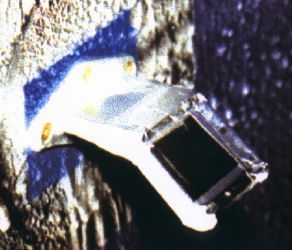Historical

Invocon developed a low-power Conformal Ice Sensor for Boeing’s version of the Joint Strike Fighter (JSF). The flush-mounted sensor was developed to detect ice underneath the de-icing boots near the leading edge skins and engine air intake nacelles of the aircraft. The sensor used multiple MEMS transducers along with software algorithms to determine the presence and type of ice on the boot.
Wind tunnel testing of the Ice Sensor was carried out at the Boeing Research and Aerodynamic Icing Tunnel located at the Boeing Developmental Center, Seattle, Washington.
During certain flight conditions and unique atmospheric conditions, ice was expected to form on exposed sections of the Boeing JSF frontal area. This was particularly true in slower flight conditions when droplets of super-cooled water impinge on the exposed flight surfaces. Both rime and clear ice could occur depending upon the atmospheric conditions. Left unchecked the buildup of ice could eventually deform the exposed flight surfaces and dramatically modify their ability to provide lift and/or consistent air ducting. Partial deformation of the flight surfaces would result in diminished performance resulting from, for example, increase stall speed and higher drag. Severe accumulations of ice could cause more serious problems by modifying the flight characteristics of the aircraft to the extent that the flight control computer algorithms are no longer viable.
